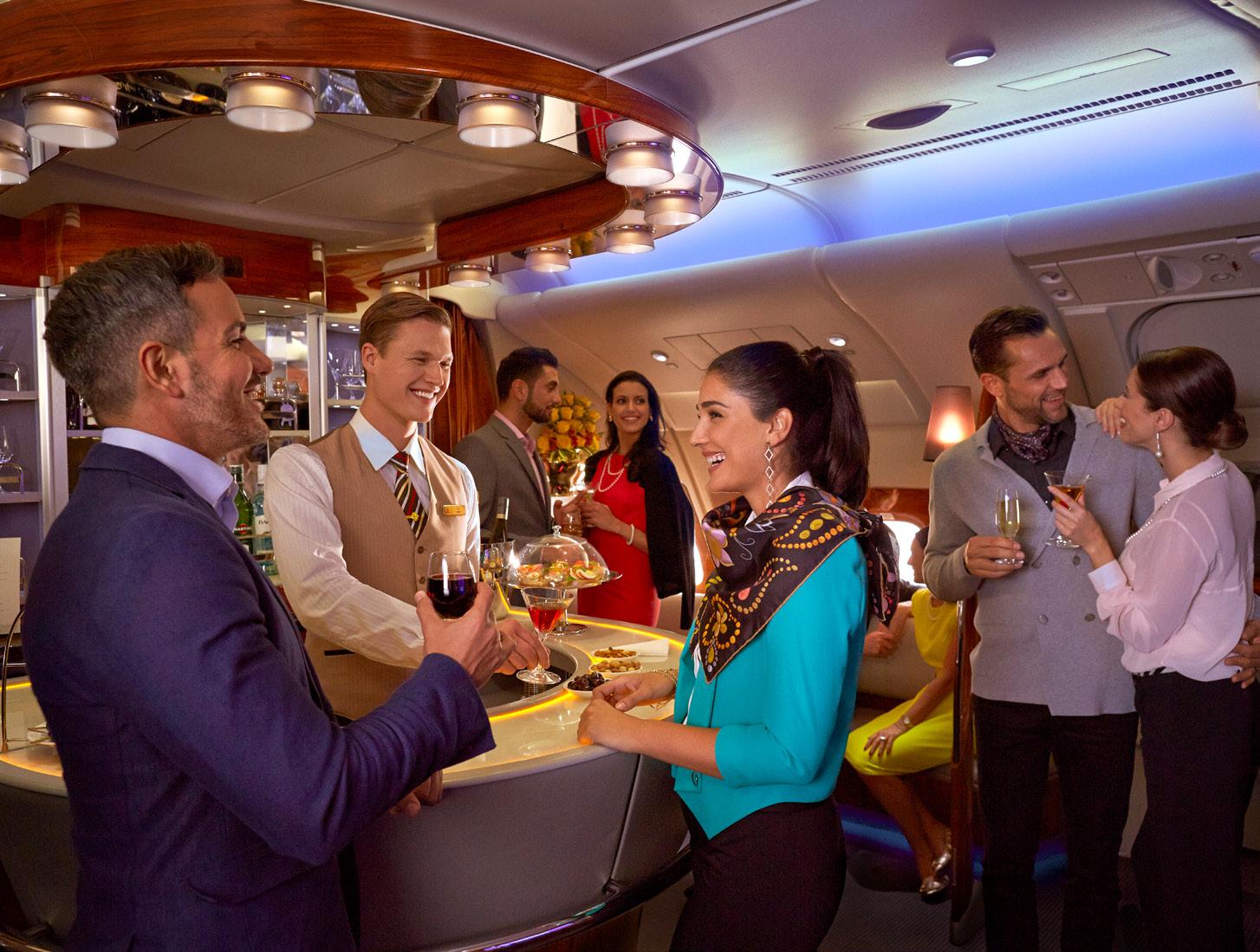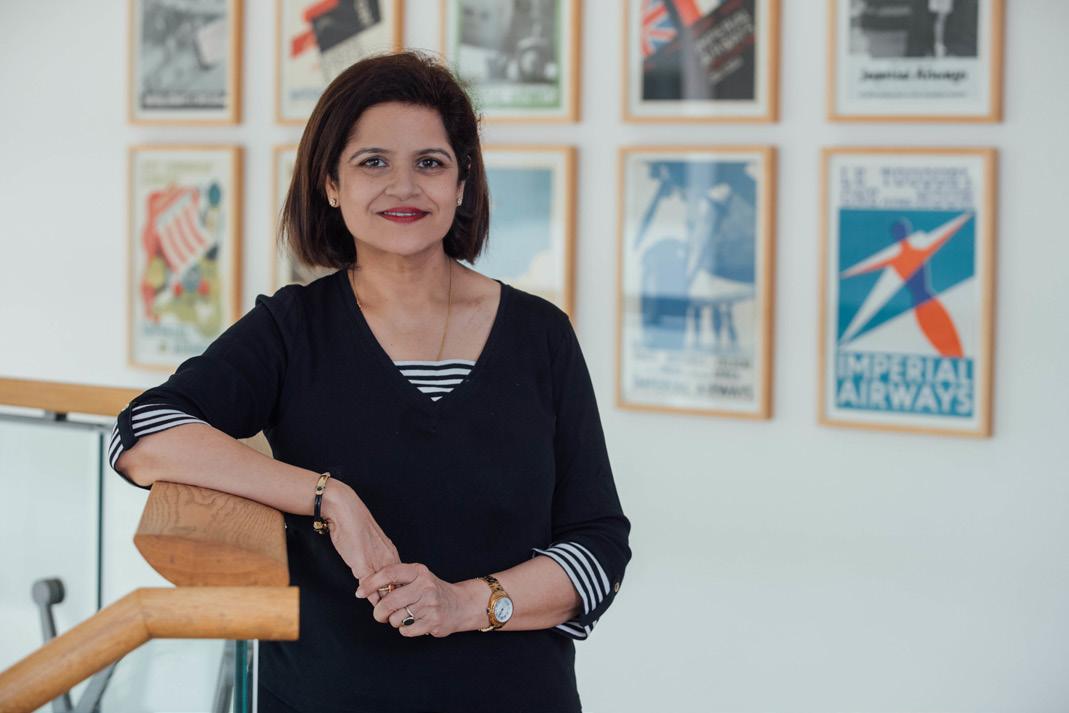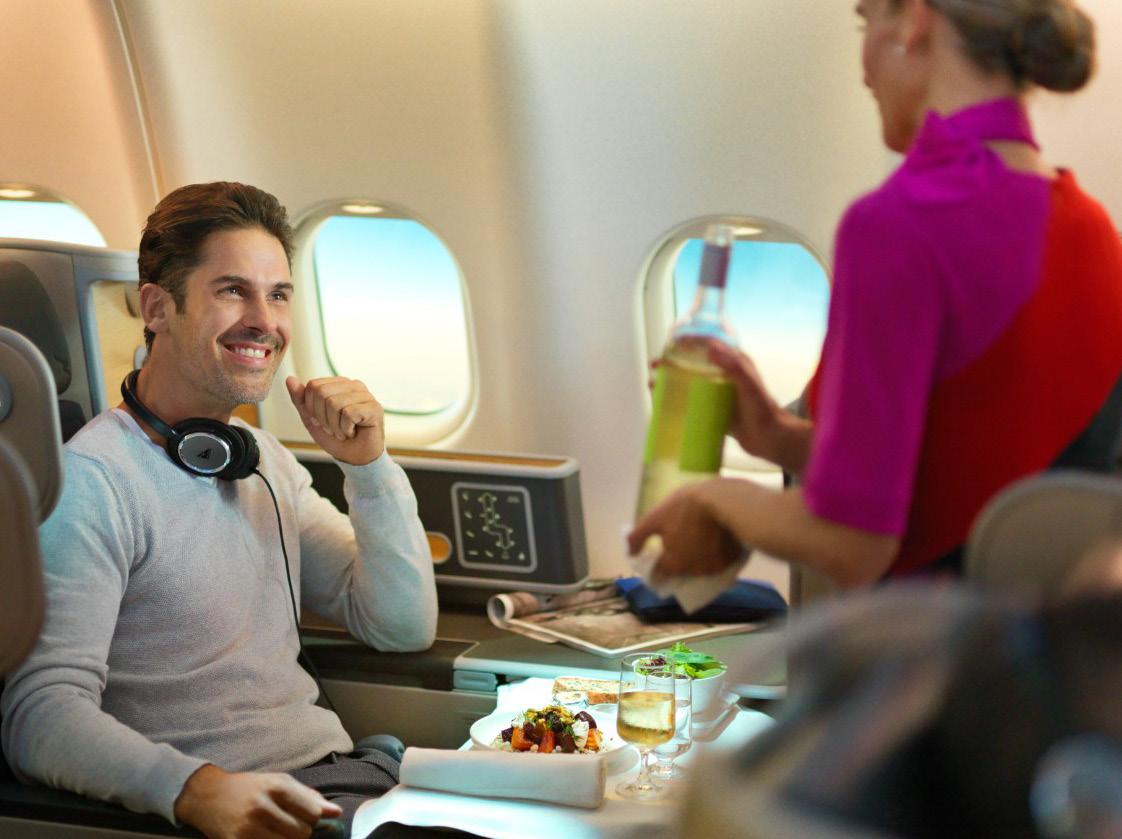
5 minute read
AIRLINE Wine
If you set out to design the perfect environment for tasting and appreciating wine, chances are it would not involve sitting in a noisy, vibrating, pressurised cabin 35,000 feet above the ground. A flute of champagne or a glass of red with your inflight dinner may be a central part of the flying experience, but it’s one that requires a lot of thought and work for the airlines involved.
“On an aircraft, the atmosphere inside the cabin affects your sense of smell, which in turn reduces the sense of taste,” explains Sajida Ismail, head of inflight product at British Airways. “As the altitude increases, the air pressure drops, along with humidity levels. At about 35,000ft, humidity is less than 12%, which is drier than most deserts.
Advertisement
“The combination of dryness and low pressure reduces the sensitivity of the tastebuds to sweet and salty foods by about 30%, making it more difficult to appreciate the smell and taste of fine wine.”

At least today’s onboard environment is a huge improvement on the old days. “On our modern fleet, the conditions are not comparable with older aircraft,” points out an Emirates spokesperson. “Humidity and pressure are greatly advanced and similar to being at altitude in the Swiss Alps.”
Nonetheless, putting together an airline wine list requires a huge amount of time and effort. The preparation of the Lufthansa wine selection, for instance, involves tasting more than 1,000 samples over 10-12 days a year; American Airlines tries about 900 wines to create its list, while Qantas’ team of sommeliers gets through 1,400 samples a year.

There’s a good deal of expertise involved too. Qantas has worked with Rockpool restaurateur Neil Perry and his team of sommeliers for more than 20 years, American draws on the knowledge of Master Sommelier Bobby Stuckey, and Lufthansa uses

Master of Wine and world champion sommelier Markus Del Monego MW. Meanwhile, Singapore Airlines has not one but three high-profile wine consultants in Jeannie Cho Lee, Michael Hill Smith and Oz Clarke.
Their task is to draw up a roster of wines that people want to drink, but that also work in the distinctive conditions found onboard a passenger aircraft. What are they looking for? “I feel you need bold flavours, whether it be salt in the food or bolder flavours in the wine when flying, to produce the best taste experience,” says Stuckey.
“A wine that, on the ground, has good balance should have good balance in the air, though fruit and sweetness tend to be suppressed and unripe tannins and acidity exaggerated,” adds Ismail. “Ripe, fruity New World wines work well. Technological advances [in the winery] – microoxygenation, a better understanding of physiological ripeness and tannin management – have all made the buying process simpler.”
Antony McNeil, Singapore Airlines food & beverage director, gives a practical example involving consultants

Cho Lee, Hill Smith and Clarke: “When choosing between two Spanish Riojas at a previous tasting, they selected a younger vintage, even though they preferred the older one, as they agreed that the subtler flavours of the latter would be less noticeable in the air.”
“We always look for wines with good acidity that tends to flatten when at altitude, which makes for a more balanced wine when flying, such as crisp, citrusy varieties like Riesling and Sauvignon Blanc,” says an Emirates spokesperson. “We also serve wines with strong characteristics (eg fullbodied Malbec) as they often show better.”
The selection process is aided by technology, which enables the recreation of cabin conditions – pressure, lack of humidity – on the ground; a useful tool when, to take BA as an example, you’re dealing with the consumption of almost 10 million bottles of wine and champagne a year, involving everything from top-end Grand Cru Bordeaux to quarter-bottles of much more humble blends.
The wines also have to work with food, providing a good match with airlines’ inflight menus. Lufthansa

crews are briefed on wine recommendations to pair with dishes on long-haul flights, backed up by the reasoning behind them, while Stuckey characterises the wine selection process as “like putting together a restaurant wine by-the-glass menu”.
Ismail adds: “We pair all the wines we choose for our premium cabins in close collaboration with our in-house chefs. The wines across the whole list need an element of versatility, and we look for this when making our selection.
“Sometimes customers will fancy a red wine but wish for a vegetarian dish, so we ensure that versatility is there. Equally, there’s currently a lovely Chassagne-Montrachet served onboard which works with the beef fillet in First because it has beautiful, expressive oak and some tertiary notes from ageing.”
Versatility is vital, given the limited storage space onboard. For instance, Lufthansa lists four red wines, four whites, one sweet, one champagne, plus fortified for First; three white, three red, one special recommendation, an LBV Port and a champagne for Business; and only one white, one red and one sparkling for Economy and Premium Economy.
One way of securing a supply of the right wine for onboard food and conditions is to create a bespoke label from scratch. At American, Stuckey and his team have worked with grape growers in southern Italy to bottle two custom-designed wines, Veloce Rosso and Veloce Bianco, with the right kind of “aromatic, bright and crisp” flavours.

Similarly, BA is surfing the wave of interest in English sparkling wine – the airline has served English fizz in First for five years now, with a big increase in consumption – by creating an exclusive Blanc de Noirs sparkler with Hattingley Valley and its winemaker, Emma Rice. “Working in partnership with wineries allows us to get the perfect pour, taking into account the taste profile, effects at altitude and food choices to pair the wine,” explains Ismail.

Most wines are sourced when ready to drink, but BA and Singapore Airlines, among others, buy top-end Bordeaux and Burgundy when young, cellaring them in the region of production so that they can be offered to First customers when at their peak years later. Lufthansa, for instance, is buying Bordeaux wines now which will only feature on the airline’s First Class list in 2028 – a ready illustration of the thought and planning that goes into sourcing the right wines for airline passengers the world over.



